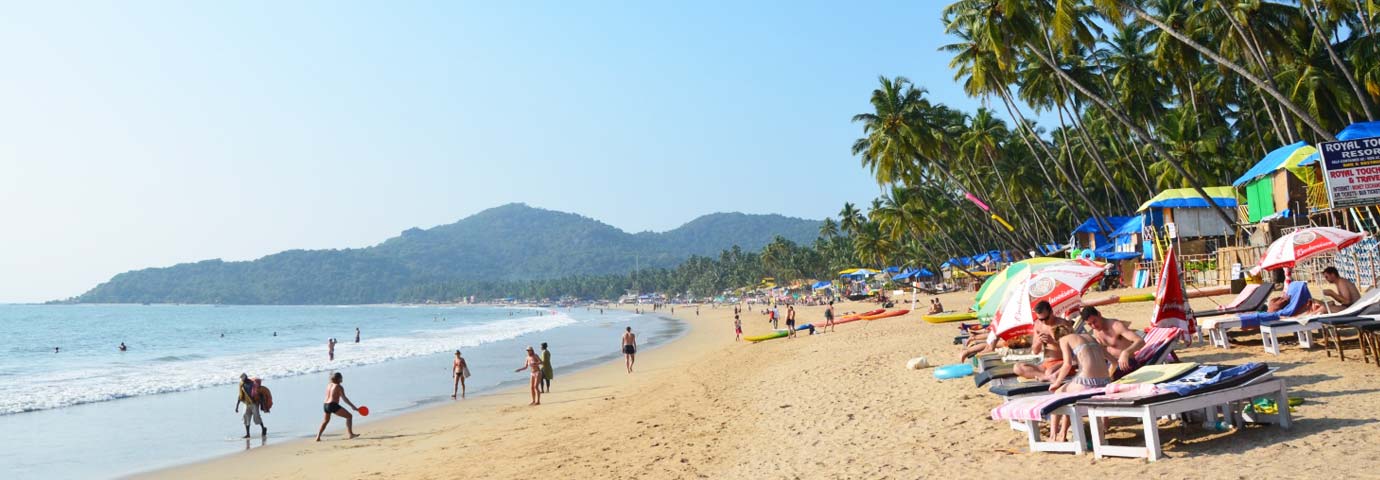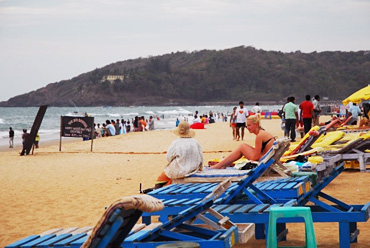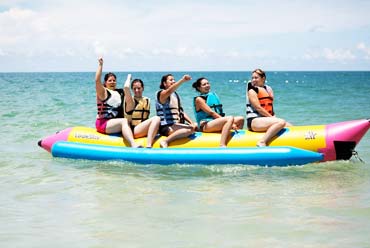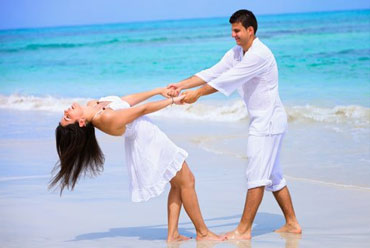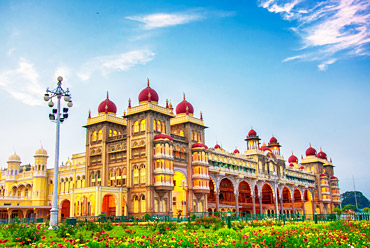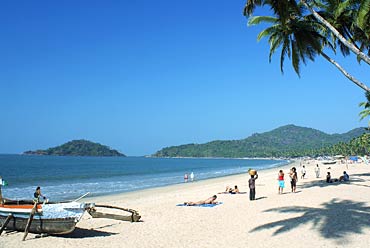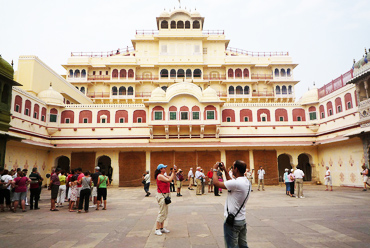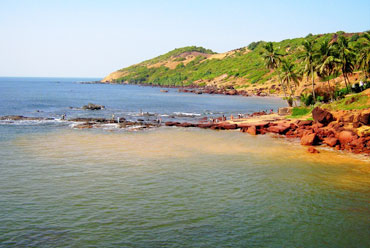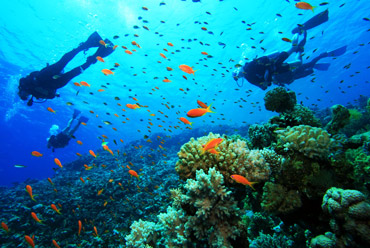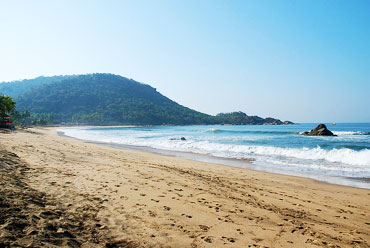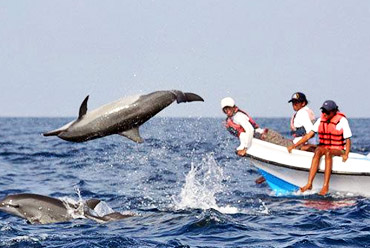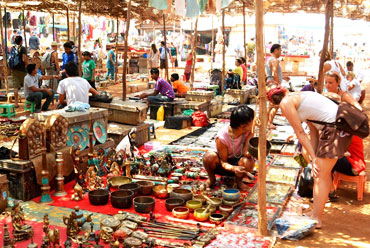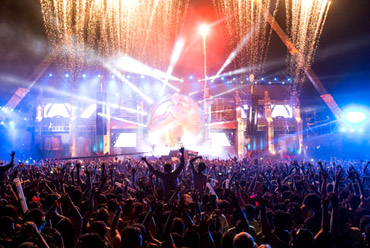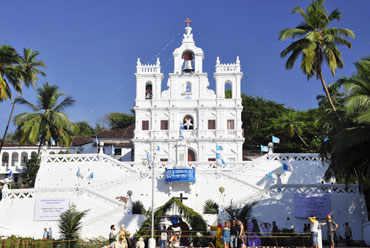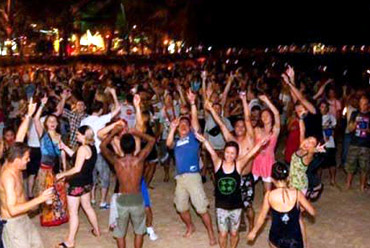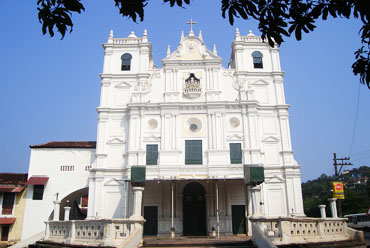Tourist Attractions in Goa
Goa, the best tourist place for India offers several tourist attractions. Beaches and churches are the key tourist attractions in Goa. Christian Pilgrimage tours and Goan Carnival attract numerous visitors. In the local dialect, Goa is often referred to as "Goa Dourada," (meaning "Golden Goa") because of its beaches, forts, churches, Waterfalls, seminaries, and Caves. Today, Goa Beach Resorts are attractions in themselves.
"The queen of Indian beaches," Calangute is a stretch of 7 km. Baga beach is a handy commuting point to Anjuna. At a distance of 7 km from Panaji is the beach of Dona Paula, which is a good site for relaxation and sunbathing. At a distance of 6 km away from Margao is another beach, Colva, which offers good accommodation. Calangute, Baga, Candolim, Colva are dominated by package tourism. Anjuna, the traditional rave center is popular with the bag packers. Benaulim falls between hype and hip, and is filled with beach shacks and low-key Goa beach resorts. Arambol in the north and Palolem in the south are idyllic by nature. Other famous beaches include Miramar and Agonda. Goa Beach Resorts along these beaches in Goa are excellent accommodation options.
The Dudhsagar waterfall and Arvalem waterfall attract many tourists every year. The rock-cut caves of Khandepar and Arvalem are also worth mentioning. The Pilar monastery, Saligao seminary, and Rachol seminary attract the religious minded travelers.
While nature has been so generous to Goa, man too has contributed a lot to Goa's beauty. The strong Roman Catholic community, with the active support of the erstwhile Portuguese rulers, has had a number of churches built in this picturesque locale. In Panaji, one must visit the church dedicated to our Lady of Immaculate Conception, and the Chapel of St. Sebastian. No doubt that Christian Pilgrimage tours to Goa are so popular.
The Goa State Museum, the Secretariat, the statue of Abbe Faria in the capital is a must see for lovers of art. The largest of the churches in Goa, the Se Cathedral is in Old Goa and is flocked by thousands of tourists every year. The holy shrine of Basilica of Bom Jesus, also in Old Goa, houses the mortal remains of St. Francis Xavier.
It is a famous pilgrimage center among the Roman Catholic world. Most Christian Pilgrimage tours include visits to these churches of Goa. Other famous churches are the Convent and Church of St. Francis of Assisi, Church of St. Cajetan, Church of St. Augustine Ruins, Church and Convent of St. Monica, Church of Our Lady of Rosary, Chapel of St. Anthony and Chapel of St. Catherine-all of which are in Old Goa.
Fort Aguada is worth a visit to savor the nostalgia of the Portuguese regime, especially in its lighthouse and the Aguada jail. Terekhol Fort in the Arambol beach has been now converted to a hotel. The Museum of Christian Art in Rachol Seminary and church and the Braganza House near Margao are also worth a visit. Besides these, to get a glimpse of the Hindu population in Goa, one has to visit Ponda. The Kerkar Art Complex in south Calangute is also an important tourist center. The Wednesday flea market at Anjuna is an important trading center for handicrafts from Kashmir to Gujarat.
Shopping in Goa
It doesn’t really ever happens that we visit a place and we do not enjoy shopping there. Like most of the other destinations of India, Goa too offers some amazing stuff to its visitors. There are shops, flea markets, stalls, designer fashion boutique, and everything else. Shopping in Goa involves getting your hands on stylish clothes, jholas and other kinds of bags, funky trinkets, showpieces, wall hangings and mirrors made from sea shells, hats, beach wear, sunglasses, spices, cashew nuts, Goa’s own Fenny and much more.
Just remember, bargain as much as possible! Following are some of the popular markets in Goa for shopping:
Anjuna Flea Market
One of the most famous markets of Goa, Anjuna flea market is known to be the ‘hippie capital of Goa’ and is organized at the Anjuna beach on every Wednesday. You can get your hands on things pouring in from all across the country including bedspreads, saris and bags from Rajasthan; colorful T-shirts from Gujarat; jewelry from Kashmir; spices from Kerala, beach wear, trinkets, hammocks, handicrafts, and other souvenirs.
Anjuna flea markets starts around mid-November and continues till the end of April month. After shopping, savor sumptuous food and beverages from the nearest restaurants and bars. To see the maximum, visit the market after 5’o clock. Live trance music is the highlights
Friday Mapusa Market
Located in northern Goa, Mapusa is a tiny town that hosts the wonderful Friday Mapusa Market. Drawing huge crowds, this market is explored from locals from all around the state. Observe the typical hustle-bustle of a Goan market. It open around 8 am in the morning and shuts down in the evening at around 6 pm. Some of the best buys here are vegetable, freshest of fishes, fresh fruits, plastic utensils, and earthen cooking pots.
Municipal Market
Municipal markets of Goa is basically a narrow street that has been converted into a market. These markets are perfect for a nice stroll where you see clothing shops, aromatic eateries, and shops of daily utility items. The specialty of this market freshest of catches, especially fishes.
Panjim Market
Another wonderful market of Goa, Panjim market is equally popular amid locals as well as tourists with its main highlight being a mix of modern shops and local stalls. It is the state’s largest market.
Baga Beach Market
Organized every Sunday near the Baga Beach, Baga beach market is also a must-visit to get good quality meat, seafood products, rural products, wood carvings, household ware, textiles. earthenware, and handicrafts. There are tattoo makers and palm readers too.
Calangute Market Square
Organized every Saturday near the post office, beside the Calangute beach, this market has leather items, Kashmiri and Tibetan products, pottery, textiles, household ware, jewelry, clothes, meat and fish products, pottery and other things on display.
Ingo’s Saturday Night Bazaar
Held at Arpora, this night markets was started by a German National, Ingo Grill who liked the idea of Nite Bazaars. This markets is extremely famous for semi-precious stones; Kashmiri, Tibetan and Rajasthani handicraft items; books, paintings, music, funky jewelry, and clothes. There are a number of food stalls too, serving Indian and popular world delicacies.
Mackie’s Night Bazaar at Baga
Quite similar to the above mentioned market, this market has shops owned by Indian as well as foreign nationals. Visitors can savor Indian, Goan, Tibetan and Chinese street food. Live performances by local music bands.

